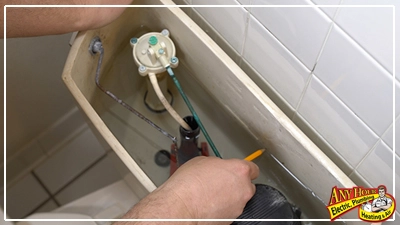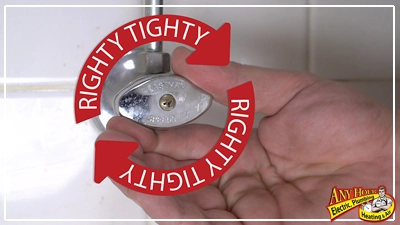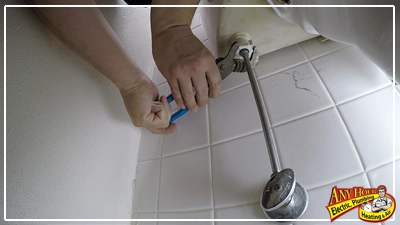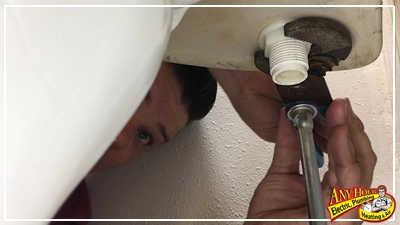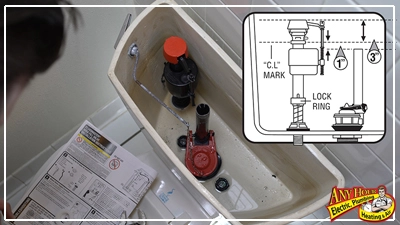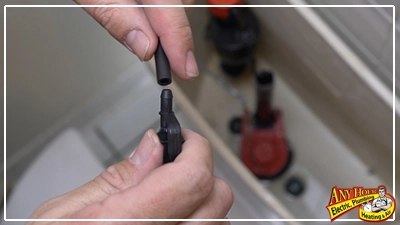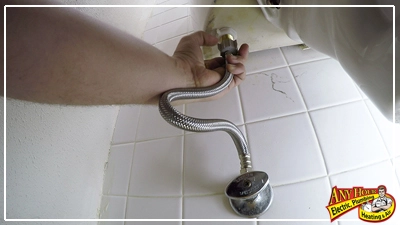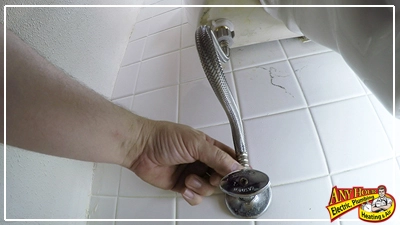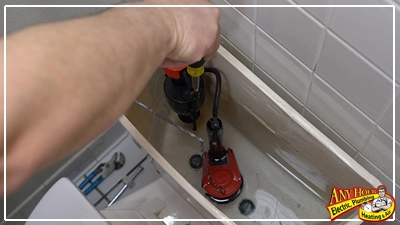How to Fix the Fill Valve on a Toilet
A running or leaking toilet can waste up to 73,000 gallons of water per year! And when it comes to how to fix a leaking, running toilet, the cause is usually a failing or malfunctioning flapper.
But often, the problem is a little bigger. Sometimes, a running toilet is caused by a bad fill valve that needs to be replaced. If you look inside the tank of your toilet and see that the fill valve is leaking or spraying water from either the top, or leaking water from the bottom of the tank, chances are good it needs to be replaced before it wastes you any more water or causes any damage to your home. Fortunately, it’s a relatively easy fix that can be done with minimal expense and a few basic tools and supplies.
Pick up a new fill valve at your local hardware store, making sure it’s the correct fit for your toilet. This will generally run you anywhere from $10-$20. You may also need a new supply line (the tubing that runs from beneath your tank to your water supply) if yours is a solid, inflexible line. Check this first and pick up a flexible supply line so you have one on hand to make this repair. Other supplies you will need include a small bucket, a sponge, a pair of pliers, a pencil, a screwdriver, a tape measure and possibly a utility knife. Let’s get started!
REMOVE LID AND MARK WATER LEVEL
Remove the lid from the toilet tank, then take a pencil and mark the level of the existing water line. This shows the water level of your tank so you can match it once you’ve replaced the part.
TURN OFF WATER
Next, turn off the water supply to your toilet. The shutoff valve is usually found behind and near the bottom of the toilet. Turn the water off by turning the valve to the right. Next, we are going to be underneath the toilet, and loosen the nut that's on the bottom of the fill valve.
DRAIN TANK AND REMOVE WATER
Next, flush the toilet to empty the water out of the tank. Hold the handle down so all of the water drains out of the tank. Remove any additional water from the tank by soaking it up with your sponge.
REMOVE WATER SUPPLY LINE
You may need adjustable pliers to loosen the bolts at the top and bottom of the supply line. Remove the water supply line nut and line.
REMOVE OLD FILL VALVE
Once the nut is off, remove the old fill valve by lifting it out the top of the toilet tank.
INSTALL NEW FILL VALVE
Next, you're going to prepare the fill valve for installation. You'll need the locknut and the shank washer that comes with the new fill valve and for some models, you’ll need to remove an inner piece of the washer with your utility knife. Slide this piece up over the bottom shank of the fill valve.
Place the new fill valve in the toilet, making sure not to tighten it down yet. Adjust the top of the fill valve to about 3 inches above the overflow pipe. If you have a standard tank, the fill valve will probably come preset to the right height. But if you have a shallow tank or a deep tank, you may need to adjust the height of the fill valve by loosening the lock ring and raising or lowering the fill valve.
Next, while applying downward pressure to the fill valve, take the locknut and screw it to the bottom of the fill valve, where it exits the bottom of the tank. Tighten it down so the rubber washer squishes out and forms a good seal. You don’t want water to leak out after you've installed the new fill valve--but you also want to be careful not to overtighten it. Overtightening can crack the fill valve or crack the tank and cause flooding.
ATTACH REFILL TUBE TO OVERFLOW PIPE
Attach the refill tube to the fill valve and attach one end of the refill tube to the refill clip. Place the clip on the side of the overflow tube. You don't need excess tubing, so measure how much you need and then cut any excess. Attach the other end of the tube to the nipple on the side of the fill valve; the tube should form a slight arc.
RECONNECT WATER SUPPLY LINE
Next, reattach the water supply line. Note: In this step, if you have looked under your toilet and found that you have a solid supply line instead of a flexible one, here's where you'll need that replacement supply line. You can save yourself the headache of trying to fit the solid line both now and anytime you may need to replace your fill valve in the future by simply replacing the line now. To remove it, loosen the nut at the bottom and it should come right off. Once it's removed, take your flexible line and tighten it down. Once you finger-tighten it at the bottom, attach it to the bottom of your fill valve. Take your pliers and maybe give it another quarter turn, being careful not to overtighten any connections.
TURN WATER BACK ON & CHECK FOR LEAKS
Turn the water back on and check all connections for leaks. If it’s working without any leaks, you’re good to go.
ADJUST WATER LEVEL IF NEEDED
Finally, check the water line and adjust the water level in the tank if it’s too low. You can check this by matching the water line to the mark you made with a pencil before you got started. If the water level needs to be adjusted, you'll find an adjustment screw on the fill valve. Flush the tank first and then make your adjustments while the water is refilling. Clockwise will make the water level go higher; counter-clockwise will make the water level go lower. Put the lid back on the tank and you're all done!
Join our email list to get access to weekly emails with helpful videos, educational articles, and DIY home maintenance guides.
